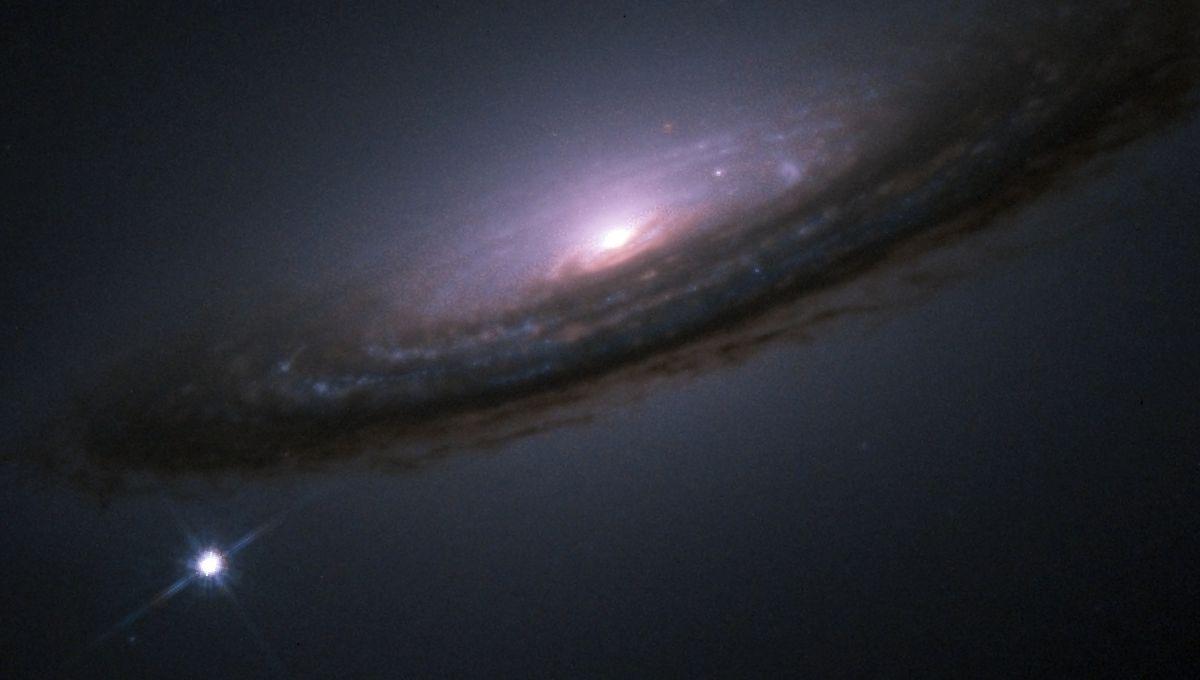-
Fil d’actualités
- EXPLORER
-
Pages
-
Blogs
-
Forums
Universe's Expansion Might Be Slowing Down, Remarkable New Findings Suggest

Universe's Expansion Might Be Slowing Down, Remarkable New Findings Suggest
For almost a century, we have known that the universe is expanding. For several decades, evidence has suggested that the expansion of the universe is accelerating. Crucial to those estimates were the use of standard candles, celestial events of the same luminosity that can be used to measure cosmic distances like milestones on a road. A famous standard candle is a Type Ia supernova, but new research suggests that it might not be as standard as we thought. And this might be a big problem.
The rest of this article is behind a paywall. Please sign in or subscribe to access the full content. Type Ia supernovae are created by a white dwarf exploding. White dwarfs are the end product of stars like our Sun once they have run out of nuclear fuel. They do not normally explode, but if they have a companion, they can steal some of its materials. Once a certain amount of mass has been stolen, the white dwarf ends up collapsing on itself and goes boom. It gives us a very different view of dark energy and the history of cosmic expansion. Dr Chul Chung The mass threshold is always the same, so the assumption is that the explosion always reaches the same luminosity. So if a Type Ia supernova is fainter, it means that it is further away. The new study argues that it might not be this simple. The researchers found with a 5.5 sigma confidence – beyond the gold standard threshold of science – that Type Ia supernova brightness depends on the age of their progenitor stars. This means that they have found with 99.9999999 percent confidence that supernovae from younger stellar populations appear systematically fainter, while those from older populations appear brighter. “Type Ia supernovae are the cosmic rulers we use to measure how fast the universe expands. If their brightness depends on the age of the stars that produce them, that ruler becomes unreliable – especially since younger stars dominate at greater distances,” Dr Chul Chung, a research professor at Yonsei University and co-corresponding author of the paper, told IFLScience. “This age effect can mimic the signal of an accelerating universe, so correcting for it gives us a very different view of dark energy and the history of cosmic expansion.” Will this plot be the end of the standard model of cosmology? Image Credit: Son et al. The standard model of cosmology sees the universe being made of dark energy (70 percent), dark matter (25 percent), and regular matter (5 percent). Dark energy acts like antigravity, pushing galaxies apart. Our best understanding to date saw it as a cosmological constant, unchanging and everywhere, responsible for the accelerated expansion of the universe. We found that the universe is no longer in a phase of accelerating expansion, but has already entered a phase of decelerated expansion. Dr Chul Chung These new findings instead suggest that dark energy changes with time, and that the universe is not on an accelerated expansion – its expansion is actually slowing down. This is not the first evidence of this idea. The largest-ever map of galaxies published earlier this year suggested that dark energy might be weakening. The new work agrees with that data. “We first detected this effect five years ago at about 3–4 sigma, and two independent groups have since confirmed it,” Dr Chung explained to IFLScience. “Now, using a much larger sample of 300 host galaxies and new, precise age measurements, the significance of this correlation has increased to 5.5 sigma. After correcting for this age bias, we found that the universe is no longer in a phase of accelerating expansion, but has already entered a phase of decelerated expansion.” If the results are confirmed, it would be a paradigm shift. It would require a novel approach to a lot of our understanding of cosmology, but it might also solve the Hubble Tension, a crucial problem in astrophysics today, as well as give us a better understanding of how the universe might end. Are Type Ia supernova flawed standard candles? The evidence says yes, and the team has ways to test their claim further. That will include using the Legacy Survey of Space and Time (LSST) that will be conducted by the Vera Rubin Observatory over the next decade. Ultimately, the better we understand stellar astrophysics, the better we can understand the universe itself. Dr Chul Chung “To test our findings more directly, without the complications from progenitor-age bias, we’re conducting an ‘evolution-free’ test that uses only Type Ia supernovae from young, coeval host galaxies across the full redshift range. This approach removes population evolution effects and provides a clean cosmological probe. Within five years, the LSST will deliver photometric data for about 20,000 new host galaxies, enabling a definitive test,” Dr Chung told IFLScience. Since the work of Henrietta Swan-Leavitt and the Harvard Computers, our understanding of stars has been fundamental to redraw the limits of the cosmos and work out its properties. This research stresses that the connection is fundamental. “By uncovering that the brightness of Type Ia supernovae depends on the age of their progenitor stars, we have identified a subtle effect that refines how we interpret the universe’s expansion. This finding is consistent with other independent observational probes and helps to make our cosmological measurements more accurate. Ultimately, the better we understand stellar astrophysics, the better we can understand the universe itself,” Dr Chung concluded. The study is published in the Monthly Notices of the Royal Astronomical Society.


